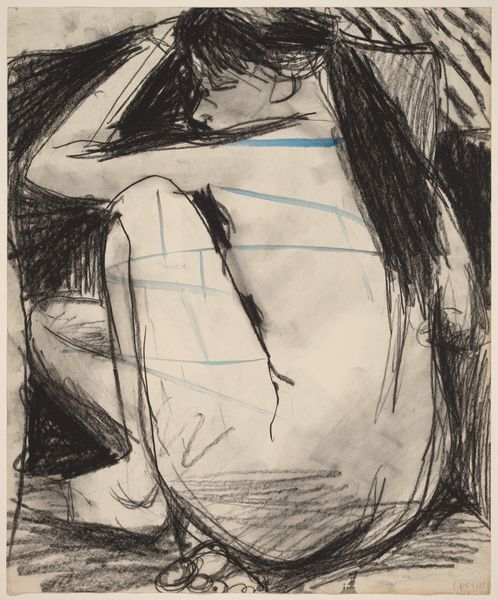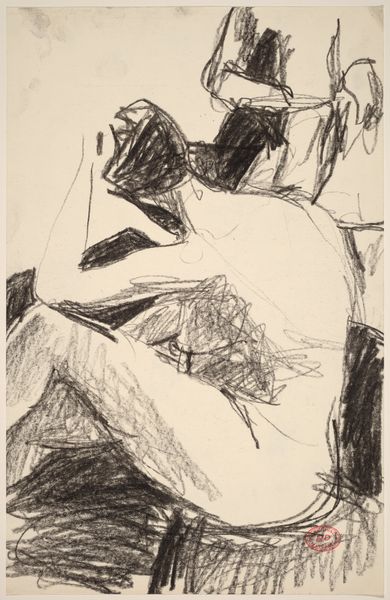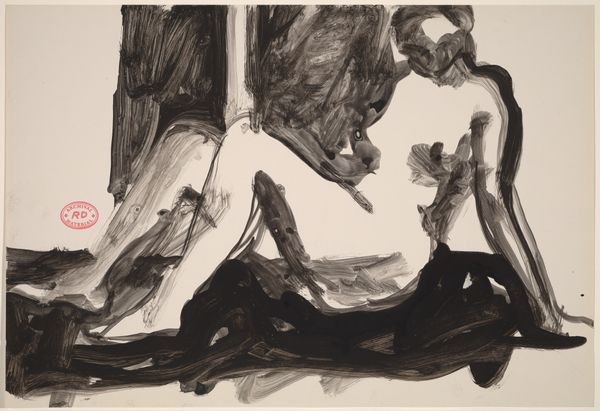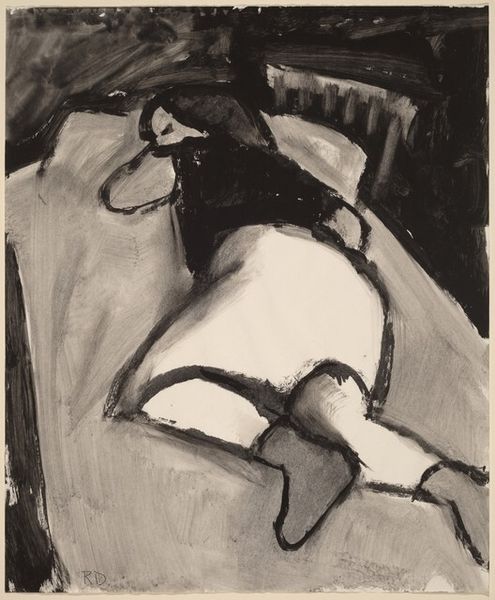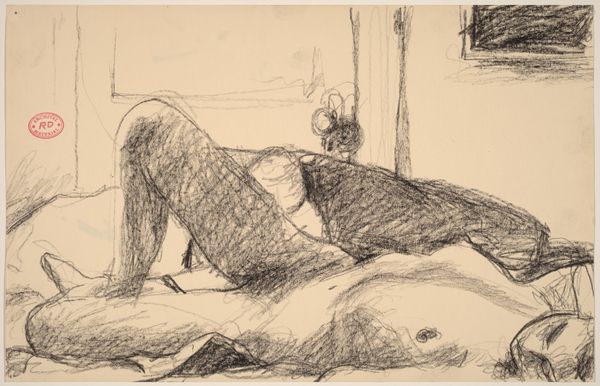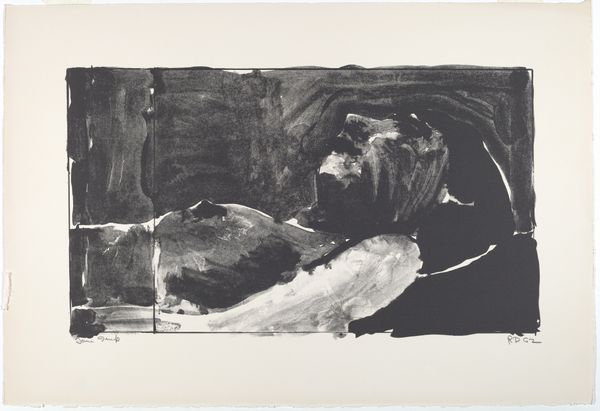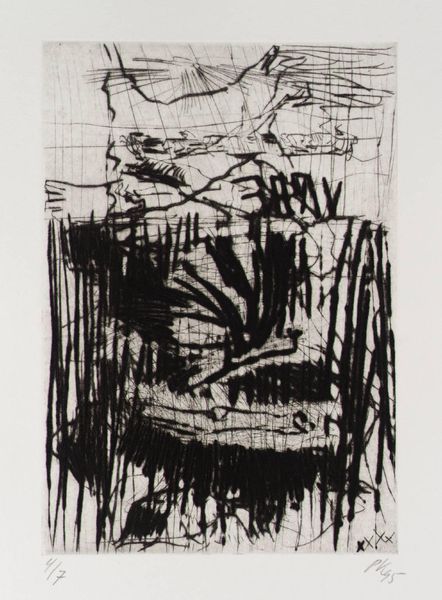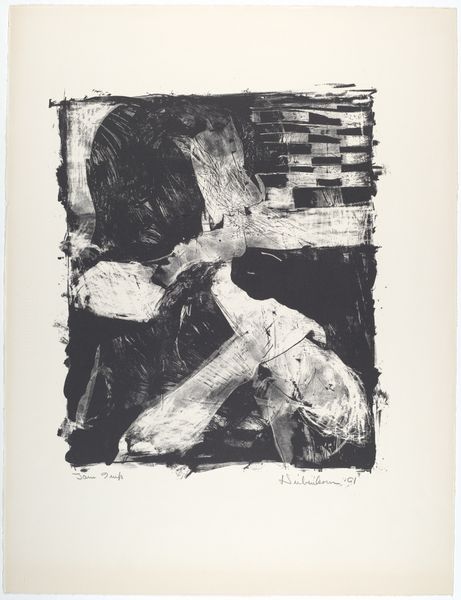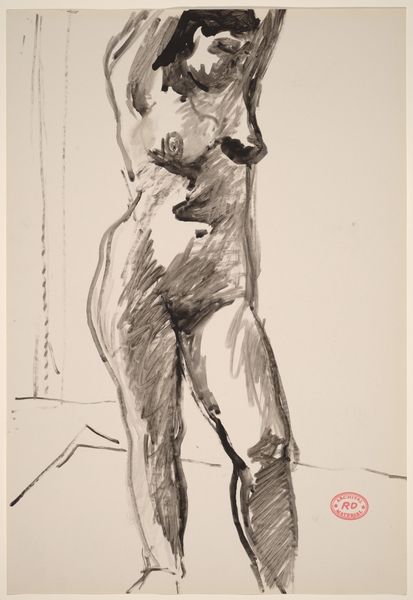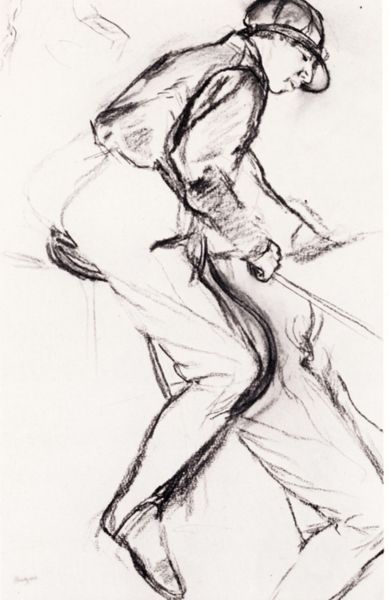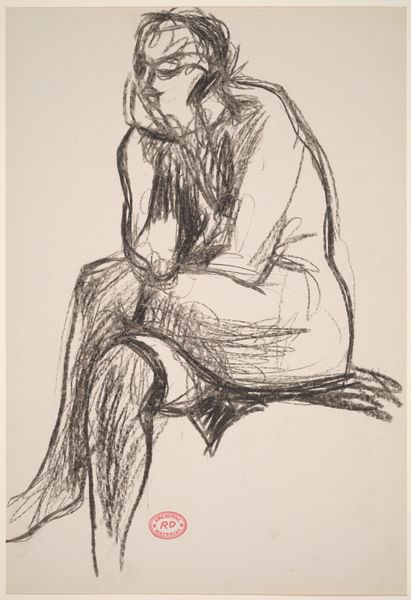
drawing, print, ink
#
abstract-expressionism
#
drawing
# print
#
figuration
#
bay-area-figurative-movement
#
ink
#
nude
Dimensions: overall: 57.2 x 40.3 cm (22 1/2 x 15 7/8 in.)
Copyright: National Gallery of Art: CC0 1.0
Curator: Welcome. Before us is Richard Diebenkorn's "Reclining Figure I," created in 1962. It is an ink print exploring figuration with abstract expressionist tendencies. Editor: It hits me as something so intimate. The stark contrast and loose lines give it a raw, vulnerable quality. I feel like I am intruding on a private moment. Curator: That vulnerability, I believe, is exactly what Diebenkorn intended. While the figure's pose is classically rendered, its abstraction complicates a simple reading of passive objectification. It was made during a time when societal expectations of women were shifting rapidly. Editor: So you are saying the figure actively defies a patriarchal gaze through its fragmented and obscured form? It reclaims autonomy by denying the viewer full access? Curator: Precisely. Diebenkorn’s print blurs the boundaries between traditional portraiture and a more self-aware representation of the female form, resisting complete comprehension. The black and white, while limiting in palette, heightens the emotional drama and sharpens the statement being made. The backdrop merges the nude within architectural form which makes the composition feel both voyeuristic and protective. Editor: I hadn't thought of the protective aspect. I focused on the bars in the background – almost as though it might be a prison cell? As if this is about constraint as well as display. Curator: An astute observation. This interpretation emphasizes the complex role of women within art history and the ongoing struggle against enforced visibility and objectification. And while he made this on paper using ink, it comes across so monumental, maybe even imposing. Editor: Thinking about the role museums play in shaping our understanding of beauty, it strikes me that works like this challenge those notions and expose hidden power dynamics. Art isn’t neutral, especially in representing bodies. Curator: And in engaging with this, we begin to question not only what is represented, but *how* it is represented, and what historical frameworks have shaped that "how." Thank you. Editor: An interesting discussion. Hopefully our listeners will continue to delve further into the history of similar representations.
Comments
No comments
Be the first to comment and join the conversation on the ultimate creative platform.
